Blog - EXPERTISES & INNOVATIONS - Capteurs magnétiques - Safety Magnetic Sensors
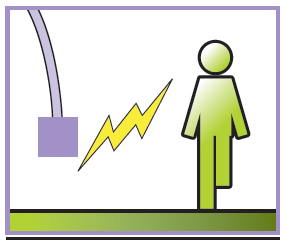 Safety Magnetic Sensors
Safety Magnetic SensorsThe 28th of April is the World Day for Safety and Health at Work. This is a good opportunity for us to remind you the importance of maintaining safety at work and introduce celduc’s solutions.
Celebrated on 28 April, World Day for Safety and Health at Work promotes the prevention of occupational accidents and diseases worldwide.
Even today, many people die as a result of workplace accidents and diseases every day, with a total of over 2.78 million deaths per year. In addition, there are some 374 million non-fatal occupational accidents each year, which result in absence from work, according to the International Labour Organisation
The International Labour Organisation encourages the promotion of a culture of safety and health at work. This of course includes industrial machinery that is up to standard and equipped with safety sensors to ensure safe operation.
celduc® relais has been an expert in safety sensors for over 20 years. Indeed we have launched our first ranges of safety magnetic sensors in 2000.
Our expertise in this field allows us to offer you a wide range of magnetic safety sensors. Our reliable and durable sensors have already been adopted by many major players in the industry.

Our products ranges cover 3 safety levels according to standards EN/ISO 13849-1 / EN/ISO 62061.
The latest safety standards are based on concepts such as the security level (SIL) or the performance level (performance level = PL).
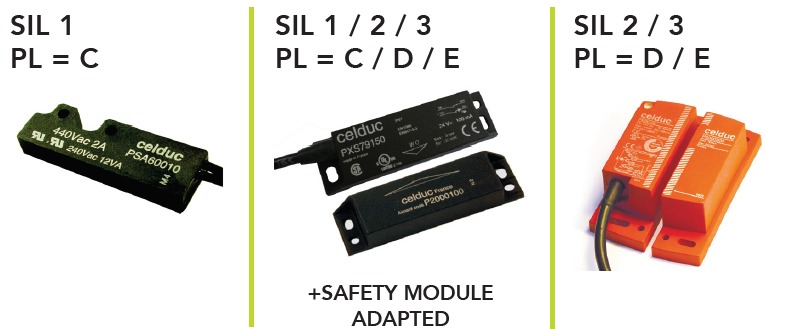
The PXS or PSS ranges are safety sensors used to give an emergency signal and / or stop dangerous machines when protective devices, machine casings or door are open.
The type of sensors used depends on the machine’s safety level. When designing machines, manufacturers firstly have to define any potential injuries that may occur when operating their machines. Secondly, they must determine the respective safety level.
The latest safety standards (EN/ISO 13849-1, EN/ISO 62061) are based on the Safety Integrity Level (SIL) and Performance Level (PL) concepts.
The Safety integrity level (SIL) is defined as a relative level of risk-reduction provided by a safety function, or to specify a target level of risk reduction. In simple terms, SIL is a measurement of performance required for a safety instrumented function.
The International Safety Standard is not limited to “reducing faults by increasing quality”, but also includes “routinely checking for faults”, “maintaining safety in the event of a failure” and “stopping operations when a fault is detected”. Consequently, ISO 13849, a safety standard which applies to parts of machinery control systems that are assigned to providing safety functions, defines each level of safety maintenance in the event of a fault. This is called safety categorization.
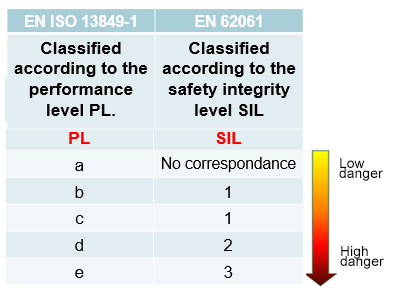
The type of sensors you will use depends on the safety level required.
One REED switch to drive the machine.
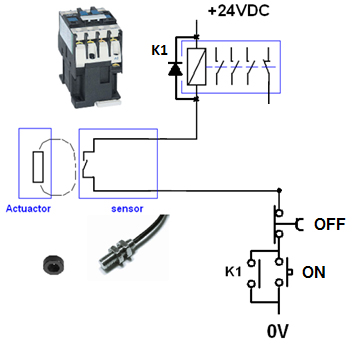
Redundant solution with a double circuit

Adding monitoring
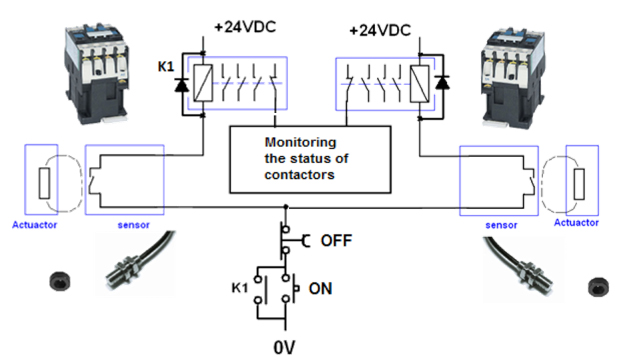
The sensor, associated with its coded magnet, reduces the possibility of tampering ; a standard magnet cannot actuate the sensor.
The components are redundant. If part of the sensor fails, the redundant circuit continues to operate.
Associated with a controller module which checks the unbalance of the signals from the sensor, the first fault is signaled if the switches are not actuated in the right order.
Safety sensors are designed to protect machine operators when opening doors, casings or covers, by preventing any dangerous machine movements.